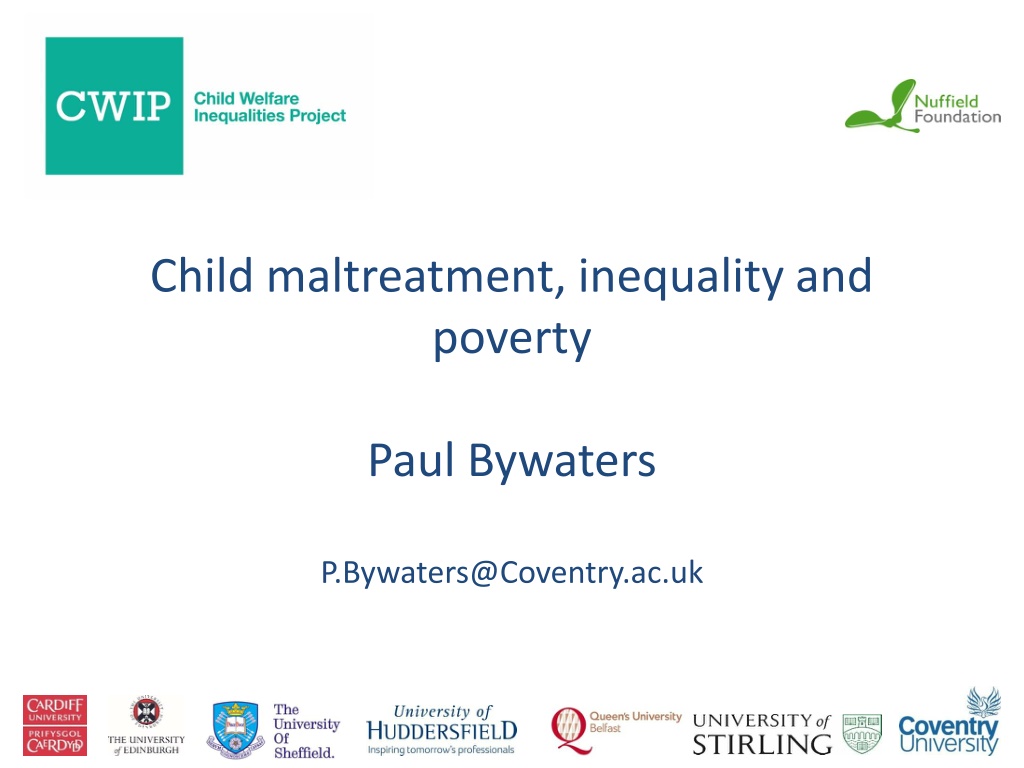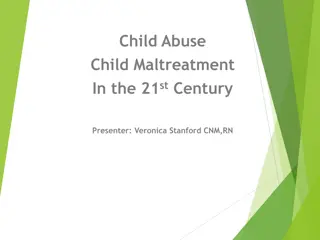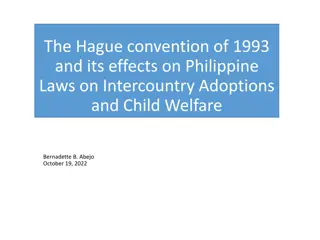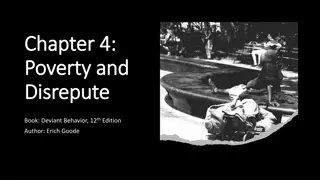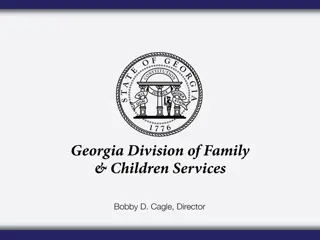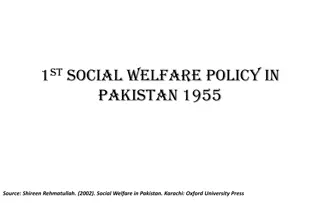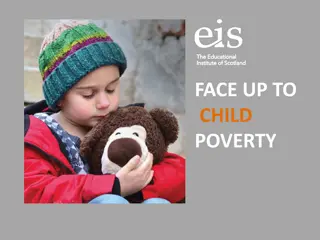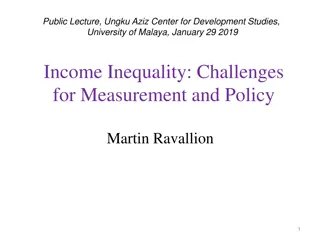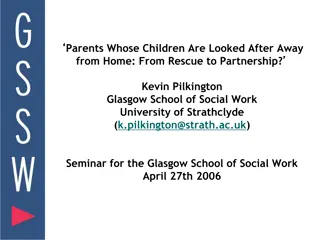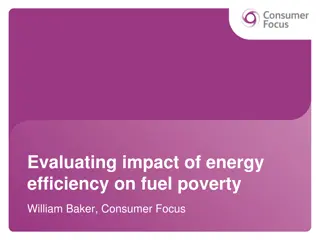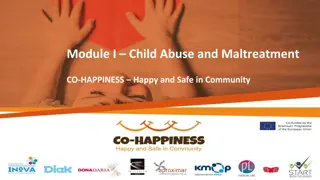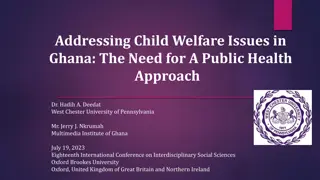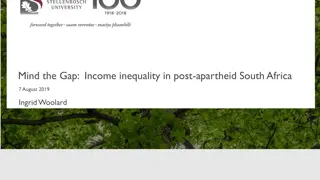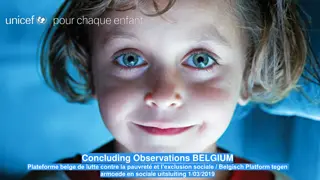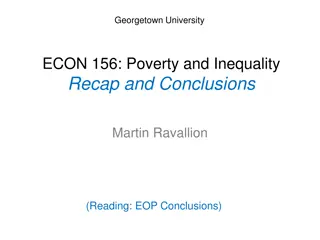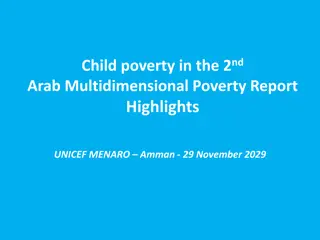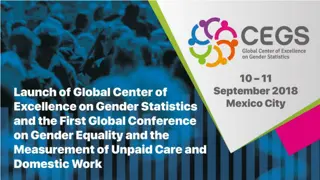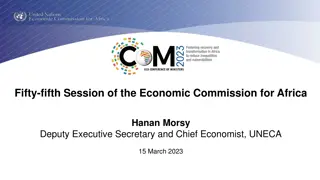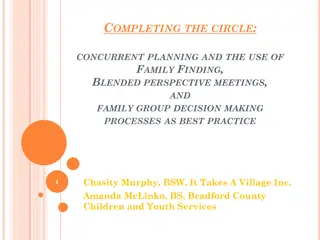Understanding Child Maltreatment, Inequality, and Poverty in Welfare Systems
Exploring the complex issues of child maltreatment, inequality, and poverty within child welfare services, this content sheds light on the challenges faced in collecting data, the relationship between poverty and child abuse, key concepts in health inequalities, and the distribution of child population by ethnic category and deprivation quintile.
Download Presentation

Please find below an Image/Link to download the presentation.
The content on the website is provided AS IS for your information and personal use only. It may not be sold, licensed, or shared on other websites without obtaining consent from the author. Download presentation by click this link. If you encounter any issues during the download, it is possible that the publisher has removed the file from their server.
E N D
Presentation Transcript
Child maltreatment, inequality and poverty Paul Bywaters P.Bywaters@Coventry.ac.uk
Inequities in Child Welfare 1. In who receives children s services interventions: chances 2. In how services respond: experiences 3. In outcomes Do children s services reflect, reproduce, reinforce or reduce social inequities?
Problems with the evidence 1. No official data collected about family circumstances 2. No official data on incidence or prevalence of maltreatment, have to use CPPs as proxy 3. No data at a level of geography below LA 4. Limited data on ethnicity
2 Nuffield Studies + JRF Review: The Relationship between Poverty and CAN 1. West Midlands study: 10% of all UK children; 13 LAs. 2. Four Nations Study (CWIP): 13% of English children; 18 LAs 100% of Welsh (22 LAs) and NI children (5 HSCBs) 50% of Scottish children (10 LAs)
4 key concepts from health inequalities 1. Relationship between social determinants and intervention rates 2. Social gradient 3. Intersectionality 4. Inverse care law
Relationship between social determinants and intervention rates
Intersectionality CIN, CPP and LAC Rates per 10,000 Children at 31.3.12 (Midlands Sample). White Mixed Asian Black Other All CIN 253.7 351.5 109.4 226.7 298.9 235.8 CPP 39.5 62.9 21.6 34.1 37.7 37.7 LAC 64.4 122.7 17.7 71.9 51.6 60.5
Distribution of Child Population by Ethnic Category Percentage of West Midlands Children Aged 0-17 by Ethnic Category and Deprivation Quintile (5 is most deprived.) 1 2 WBRI 15.3 19.9 WOTH 7.9 12.1 3 4 5 N 18.3 14.3 19.3 18.9 27.2 46.9 824553 24565 MWBC MWBA MWAS MOTH 4.9 6.8 10.1 8.1 7.4 11.2 12.4 9.6 11.4 11.5 13.6 12.3 18.6 18.9 17.8 17.8 57.6 51.6 46.1 52.2 35204 4845 18224 10938 ABAN AIND AOTH APKN 1.4 8.8 4.6 1.5 1.8 10.7 6.2 2.3 4.5 15.3 10.0 5.6 8.0 19.0 17.7 12.3 84.3 46.3 61.5 78.3 22016 49772 22031 89318 BCRB BAFR BOTH 1.5 1.7 1.2 3.4 2.9 2.2 8.2 5.5 5.1 14.4 12.1 11.8 72.4 77.8 79.7 17210 22978 12355 CHNE 12.2 16.5 12.1 18.1 41.1 5152
Intersectionality: Broad Categories West Midlands LAC rates (per 10000 children) overall and by ethnic category in the most disadvantaged quintile (Q5) Number of Children LAC LAC Rate Overall LAC Rate All Q5 White LAC Rate Q5 Mixed LAC Rate Q5 Asian LAC Rate Q5 Black LAC Rate Q5 All West Midlands Sample 7138 60.5 91.2 122.1 N=2893 159.6 N=589 20.8 N=260 78.3 N=310
Intersectionality: Multiple Categories LAC Rates by Ethnic Category and Deprivation Quintile, where the number of children is greater than 10. 1 2 3 WBRI 17.6 26.1 44.7 MWBC 69.1 57.4 MWBA MWAS 64.5 MOTH 124.4 96.5 AIND APKN ABAN AOTH BCRB BAFR ALL 17.9 26.7 42.7 4 76.6 111.3 164.1 77.3 179.9 10.6 11.9 5 125.4 126.1 84.0 204.7 245.0 14.3 20.9 21.0 31.0 172.4 39.1 91.2 All 64.9 107.4 86.7 124.0 185.6 10.4 18.8 20.4 30.9 142.9 40.5 60.5 N = 5355 378 42 226 203 52 168 45 68 246 93 7138 46.3 72.9 50.5 69.4
Inverse Intervention Law Overall a child s chances of an extreme child welfare intervention is much greater at higher levels of deprivation. But for any given level of neighbourhood deprivation, a child in a local authority with low overall deprivation is more likely to be on a CPP or to be a looked after child than a child in an equivalent neighbourhood in a very deprived local authority.
Impact of IIL: Comparison of two LAs County actual numbers, 2012 sample Expenditure per head, All 0-17, , 2015 % of all aged 0-17 in Q5, 2014 County Projected with Borough Rates % Difference Difference CPP 525 143 -382 -72.7 822 55.1 LAC 605 333 -272 -44.9 537 3.8 Total 1130 477 -653 -57.8
Implications of an inequalities perspective 1. Data 2. Policy 3. Finances 4. Locus and focus of services 5. Practice 6. Inspection 7. Training 8. Research
To join the Child Welfare Inequalities Network on jiscmail go to www.jiscmail.ac.uk/childwelfareinequalities To become a stakeholder in the Child Welfare Inequalities Project contact Sophie Blackmore ac0672@coventry.ac.uk
References Bywaters, P., Bunting, L. , Davidson, G. , Hanratty,J. , Mason, W. , McCartan, C. and Steils, N. (2016) The relationship between poverty, child abuse and neglect: an evidence review. York: Joseph Rowntree Foundation. https://www.jrf.org.uk/report/relationship-between-poverty-child-abuse- and-neglect-evidence-review Bywaters, P., Brady, G., Sparks, T., Bos, E., Bunting, L., Daniel, B., Featherstone, B., Morris, K. & Scourfield, J. (2015) Exploring inequities in child welfare and child protection services: explaining the inverse intervention law , Children and Youth Services Review, v. 57, October, pp. 98-105 doi: 10.1016/j.childyouth.2015.07.017 Bywaters, P. (2015) Cumulative jeopardy? A response to Brown and Ward. Children and Youth Services Review, online, doi:10.1016/j.childyouth.2015.03.001 Bywaters, P. (2015) Inequalities in child welfare: towards a new policy, research and action agenda. British Journal of Social Work, 45 (1): 6-23 doi:10.1093/bjsw/bct079 Bywaters, P., Brady, G., Sparks, T., and Bos, E. (2014) Inequalities in child welfare intervention rates: the intersection of deprivation and identity, Child and Family Social Work, doi:10.1111/cfs.12161 Bywaters, P., Brady, G., Sparks, T., and Bos, E. (2014) Child welfare inequalities: new evidence, further questions, Child and Family Social Work, doi:10.1111/cfs.12154
